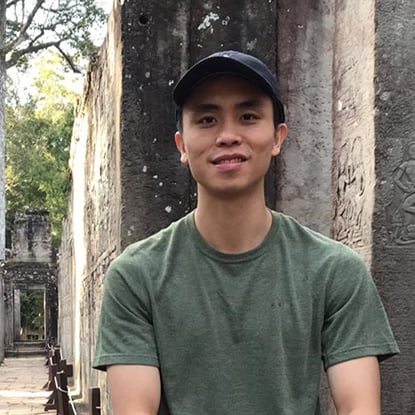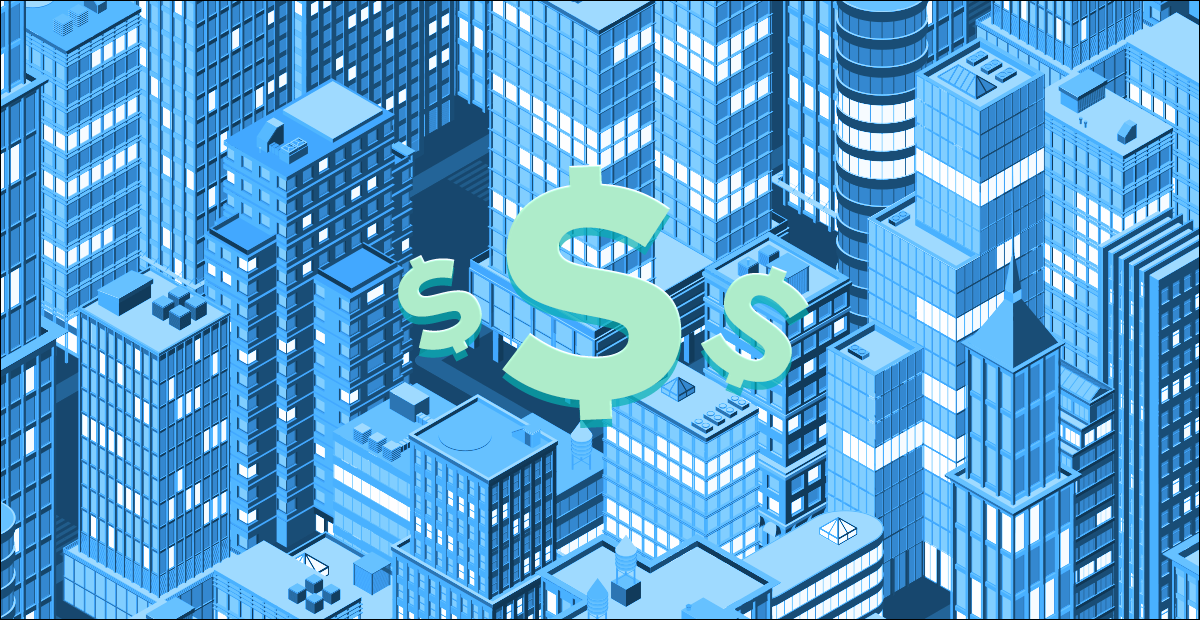Whether you’ve bought or sold a home, chances are you’ve come across the tax that’s levied on real estate transactions, otherwise known as BSD, ABSD, and SSD.
Best Home Insurance Plans in Singapore on SingSaver
AIG Enhanced Public Housing Contents Insurance (For HDB only) | AIG Homes Complete Insurance | AIG Home Advantage Package | MSIG Enhanced HomePlus | Singlife Home Lite | FWD Home Insurance | TIQ Home Insurance | Sompo HomeBliss | HL Assurance Home Protect360 | Great Eastern HomeGR8 Plus
Buying and selling residential property in Singapore (especially if we’re talking about owning multiple properties) means having to deal with property stamp duty — buyer’s stamp duty (BSD), seller’s stamp duty (SSD) and additional buyer’s stamp duty (ABSD) to be exact.
If you’re wondering why there are more costs involved with buying property, it could all boil down to the introduction of property cooling measures designed to quell demand and limit the rise of buying-and-selling – also known as flipping properties to make a profit.
As you may have guessed, the stamp duty payable depends on who you are in the property transaction. Here we’ll take a closer look at the different acronyms that permeate our real estate transactions and how much these taxes can potentially add up to.
Table of contents
- What is Buyer's Stamp Duty?
- How to calculate BSD
- BSD exemptions
- What is Additional Buyer's Stamp Duty?
- How to calculate ABSD
- ABSD remission
- How to pay ABSD and BSD
- ABSD exemptions
- What is Seller's Stamp Duty?
- How to calculate SSD
Buyer’s Stamp Duty (BSD)
Who needs to pay BSD?
There’s no other way around it — when you’re buying a property or land in Singapore, BSD will be levied on your purchase. The BSD rate depends on the purchase price or market value of the property, whichever is higher.
From 15 February 2023 onwards, the BSD rate is as follows:
| Purchase price or market value of the property | BSD rates for residential properties (from 15 February 2023) | BSD rates for non-residential properties (from 15 February 2023) |
| First S$180,000 | 1% | 1% |
| Next S$180,000 | 2% | 2% |
| Next S$640,000 | 3% | 3% |
| Next S$500,000 | 4% | 4% |
| Next S$1.5 million | 5% | 5% |
| Properties in excess of S$3 million | 6% | 5% |
Here are the previous rates from 20 Feb 2018 to 14 February 2023:
| Purchase price or market value of the property | BSD rates for residential properties (20 Feb 2018 to 14 February 2023) | BSD rates for non-residential properties (20 Feb 2018 to 14 February 2023) |
| First S$180,000 | 1% | 1% |
| Next S$180,000 | 2% | 2% |
| Next S$640,000 | 3% | - |
| Remaining amount | 4% | 3% |
How to calculate BSD payable
Here’s what your BSD calculation could look like if you buy a 4-room HDB resale flat at S$500,000.
| Purchase price or market value of the residential property | BSD rate | Amount |
| First $180,000 | 1% | S$180,000 x 1% = S$1,800 |
| Next $180,000 | 2% | S$180,000 x 2% = S$3,600 |
| Next $640,000 | 3% | (S$600,000 - S$180,000 - S$180,000 x 3%) = S$7,200 |
Based on the calculations above, your BSD payable adds up to = S$1,800 + S$3,600 + S$7,200 = S$12,600
Here's a quick way to calculate BSD:
Are there any exemptions where I don't need to pay BSD in Singapore?
That said, there are a few instances where BSD won't apply, such as:
- Aborted sale and purchase agreements
- Matrimonial proceedings
- Conveyance directions
- Transfer HDB flats within a family
- Through property inheritance
SingSaver Exclusive Promotion: Enjoy 20% off for MSIG Home Insurance and receive S$30 PayNow when you apply now. Valid till 6 May 2024. T&Cs apply.
Additional Buyer’s Stamp Duty (ABSD)
Who needs to pay additional buyer’s stamp duty?
On top of BSD, you may also need to pay ABSD depending on criteria such as your residency status and the number of properties that you own.
For Singaporeans, ABSD applies to you if you buy your second or subsequent properties. Yes, this means you’ll have to pay ABSD on top of the initial BSD. The ABSD amount is based on the valuation or the property’s selling price, whichever is higher.
What is the ABSD rate in Singapore?
Here are the current ABSD rates:
| Property type | Buyer type | ABSD rates (from 16 December 2021 to 26 April 2023) | ABSD rates (on or after 27 April 2023) |
| First property | Singapore citizen | N.A | N.A |
| Second property | Singapore citizen | 17% | 20% |
| Third and subsequent properties | Singapore citizen | 25% | 30% |
| First property | Singapore permanent resident | 5% | 5% |
| Second property | Singapore permanent resident | 25% | 30% |
| Third and subsequent properties | Singapore permanent resident | 30% | 35% |
| Any residential property | Foreigner | 30% | 60% |
| Any residential property | Entities (companies, trustees, or associations) | 35% | 65% |
How do you calculate ABSD in Singapore?
Say that you're buying a property for S$2 million, and you're subjected to a 17% ABSD. The ABSD amount you'll need to pay is S$2 million X 17% = S$340,000.
You can also use IRAS' stamp duty calculator to calculate the amount of BSD and ABSD payable.
That said, you can apply for ABSD remission, which exempts you from having to fork out the hefty ABSD payment.
Who can apply for ABSD remission?
According to IRAS, you may be eligible for ABSD remission if the following scenarios apply to you:
- If you're a married couple (with at least one Singaporean citizen) who’s buying your first property through a joint purchase (i.e. the house is under both names only)
- If you're a married couple (consisting of at least one Singaporean citizen) selling your first property within six months after the Temporary Occupation Permit (TOP) or Certificate of Statutory Compliance (CSC) of your second property
You can apply for an ABSD remission on IRAS' website here.
What if you're buying a property jointly with someone else?
If you're buying a property with someone else and ABSD applies to both of you, the higher ABSD rate will apply.
For instance, say that you're jointly buying a condo as a Singaporean couple. You both also have the following properties:
| Your properties | Your spouse's properties |
| Condo unit (sole owner) | Condo unit (sole owner) |
| HDB flat (joint owner) |
How do I pay BSD and ABSD in Singapore?
There are a few ways to pay BSD and ABSD:
- GIRO
- PayNow QR
- AXS
- One-time GIRO deduction using DBS/POSB
- Internet banking fund transfer
- Telegraphic transfer
- SingPost service bureaurs (Chinatown, Novena, Raffles Place, Shenton Way)
- Cheque/cashier's order
BSD and ABSD must be paid in full and cannot be paid in instalments. You can use your CPF money to pay BSD and ABSD first and apply for reimbursement from your CPF account later.
ABSD and BSD deadline
If the sale and purchase agreement was signed in Singapore, the BSD and ABSD must be paid within 14 days of signing the sale and purchase agreement or the date of acceptance of the option to purchase (OTP).
If the sale and purchase agreement was signed overseas, then the deadline is 30 days after the agreement was received in Singapore.
Any delays in payment will result in penalty charges, and IRAS may also take legal action against you or impose a Travel Restriction Order to prevent you from leaving Singapore.
ABSD exemptions
There are a few scenarios where you won't need to pay ABSD in Singapore:
- Where you have already contacted to sell your current residential property before signing the OTP for the new residential property
- If you're downgrading from a private property to buy an HDB resale flat
- If you 'decouple' as joint owners, where one of the co-owners transfers his/her share to the other co-owner. By doing so, he/she will be considered a first-timer and is free to buy a second property without incurring ABSD. You can decouple in two ways: selling your shares to the other co-owner or transferring via a gift. Note that decoupling only works for private properties
- If you're a foreigner under the respective Free Trade Agreements (nationals or permanent residents of Iceland, Liechtenstein, Norway, or Switzerland, and nationals of the United States of America)
99-to-1 loophole
A popular hack known as the 99-to-1 ownership method allows co-owners under tenancy-in-common ownership to easily decouple and buy their second and subsequent properties to avoid hefty stamp duties.
Unlike joint tenancy, where each co-owner has an equal share in a property, tenancy-in-common allows co-owners of a property to have different stakes (e.g. 70% to 30%, 85% to 15%, etc.).
Thus, tenants-in-common under the 99-to-1 ownership method basically means that one co-owner has a 99% share in the property while the other co-owner owns the remaining 1%.
One of the main reasons why married couples employ the 99-to-1 ownership strategy when they buy a private property is because it's less expensive for them to decouple in the future if they want to avoid hefty ABSD charges should they buy a second property.
Moreover, the 99-to-1 strategy also incurs a lower BSD.
For instance, say that you and your spouse purchase a condo unit worth S$1 million as tenants-in-common. You own a 99% stake in the property, whereas your spouse owns the remaining 1%.
If you were to buy his/her 1% share, you would only incur an ABSD of S$1,700 (S$1,000,000 X 1% X 17%) instead of paying the full ABSD of S$170,000. Meanwhile, the amount of BSD payable is just S$100 (S$10,000 X 1%).
However, it was reported that IRAS is investigating cases of property owners employing the 99-to-1 ownership manner with the deliberate purpose of avoiding ABSD.
If it's established that tax avoidance has taken place, IRAS will recover the rightful stamp duty and impose a 50% surcharge on the additional duty payable. Owners who miss the deadline to pay the stamp duty and penalty will also be imposed with penalties 4X the amount.
Buying a new home means taking up the mantle in protecting it. Be sure to compare the best home insurance plans and give yourself greater peace of mind.
Seller’s Stamp Duty (SSD)
Who needs to pay SSD?
Applicable to private residential properties purchased on or after 20 Feb 2010, SSD applies to you if you sell a property within three years of purchasing it. SSD was introduced in 2010 as means to curb the act of flipping properties for profit.
Simply put, the shorter the holding period, the higher the SSD rate. SSD might also be applicable if the property changed hands through transfer of ownership, divorce or inheritance.
| Holding period | SSD Rate |
| Up to 1 year | 12% |
| More than 1 year and up to 2 years | 8% |
| More than 2 years and up to 3 years | 4% |
| More than 3 years | NA |
*SSD rate applies to properties purchased on and after 11 Mar 2017
Back to topHow to calculate the SSD payable
Let’s say you’ve sold your condo at S$2,500,000 after one and a half years.
Since the holding period is just under 2 years, you’ll be subjected to the 8% SSD rate
SSD payable = S$2,500,000 x 8% = S$200,000
In conclusion
Be sure to include the stamp duties in your financial planning if they apply to you. For instance, it is important to factor in the SSD early as it’ll have a direct impact on your sale proceeds. Pro tip: to make things easier, forego the manual calculations and tinker with the Inland Revenue Authority of Singapore’s (IRAS) online stamp duty calculators to find out the exact amount you’ll need to pay.
Read these next:
Buying A HDB Resale Flat: How To Minimise Cash Over Valuation (COV)
Property Tax, Explained: Annual Value, Tax Rate And How To Make Payment
How To Buy A House In Singapore: A Complete Guide
7 Popular Types Of Investment In Singapore (And Tips To Use Them For Optimal Gains)
Guide To Property Investment In Singapore
Similar articles
Singapore Budget 2023: Higher HDB Grants, Stamp Duties, and ARF Rates - How Will They Affect You?
Calculate Rental Yield in Singapore: A Quick and Simple Guide
Inheriting A Property In Singapore: Do You Need To Pay Inheritance Tax And Stamp Duties?
Downpayment For Condo In Singapore: How Much Cash Will You Need Upfront?
Property Tax, Explained: Annual Value, Tax Rate And How To Make Payment
7 Money Considerations When Switching Properties
Can I Afford This? Salary Benchmarks For Upgrading To A Condo In Different Districts
How Much Taxes to Pay in Singapore (If You’re an Expat)?










